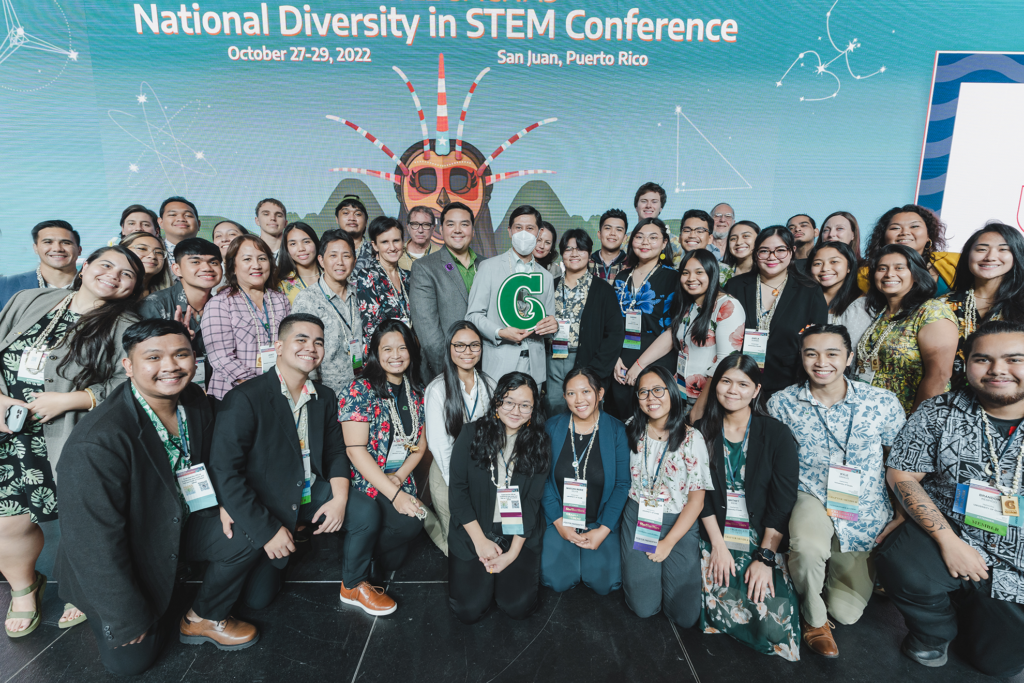



What do an accountant, former on-air personality, architect, and a human resources professional have in common?
They are passionate about the future of our island and entered the newest cohort of the Guam Green Growth (G3) Conservation Corps, a workforce development program by the University of Guam Center for Island Sustainability and Sea Grant, and the G3 initiative.
Now on its 4th cycle, the program introduced its 12 new members on Tuesday, February 27, at the UOG Global Learning and Engagement Building.
Addressing the new G3 Conservation Corps, UOG Senior Vice President and Provost Sharleen Santos Bamba, Ph.D. said, “You represent the next generation of environmental leaders. Your enthusiasm commitment, and thirst for knowledge inspire us all. The next five months will be a journey of discovery, hard work, and profound personal growth.”
Most members of the 4th cohort come from industries outside the environmental and conservation sectors. Some of them have already established careers in their respective fields but are interested in exploring opportunities within the emerging green economy.
The members of the new G3 Conservation Corps are:
- Nate Aguon (Barrigada)
- Thomas Benavente (CNMI, Tamuning)
- Makeo Blas (Mangilao)
- Telel Blesam (Palau)
- Jaevynn Cruz (Talo’fo’fo)
- Rico Lizama (Yona)
- Beato Manglona (Tamuning)
- Jem Miller (Dededo)
- Hannah Perez (Barrigada)
- Tristan Quintanilla (Hågat)
- Emma Sánchez (Dededo)
- Loren Villanueva (Yigo)
At the event, the G3 Conservation Corps members shared their motivation for joining the program.
Quintanilla, a policy analyst for four years, stated, “I believe that this is a way to merge the past and the future. As a researcher, I would often look at problems, and search for solutions. However, I noticed a significant difference between learning about things and being able to practice them. So, I am looking forward to that.”
Perez, with a background in human resources, expressed, “Ever since I was younger, I’ve been passionate about addressing climate change because I know it directly impacts our island. Rising sea levels, and trash in the ocean, you see that every day.”
UOG Center for Island Sustainability and Sea Grant Director Austin Shelton, Ph.D., told the new G3 Conservation Corps that diverse opportunities are available to graduates of the program.
“Whether your interest lies in aquaculture, agriculture, or even nighttime efforts to catch brown tree snakes, there are immediate job openings in these areas. Many opportunities are available right here at the Research Corporation of the University of Guam, as well as through our various local and federal agency partners,” he said.
Shelton added that most of the members of the previous cohorts had achieved success in pursuing their aspirations after the program. “Over 70 percent of our graduates have transitioned into green jobs or have chosen further training, all closely aligned with the green economy.”
Throughout the five-month program, the G3 Conservation Corps will undergo training and gain exposure in various sustainability-related areas, including agriculture and aquaculture, island beautification, invasive species removal, reforestation, circular economy practices, recycling, and renewable energy.
They will also have the opportunity to engage with diverse environmental organizations and initiatives on Guam and the rest of the Micronesia region.
After completing the program, the G3 Conservation Corps will earn up to 80 continuing education units (CEUs) from UOG Global Learning and Engagement.
The first G3 Conservation Corps program was launched in 2021.
WHAT IS G3?
The UOG Center for Island Sustainability and Sea Grant facilitates the Guam Green Growth, or G3 initiative, in cooperation with the Office of the Governor of Guam and the G3 Working Group, whose members represent all sectors of society. With the 17 UN Sustainable Development Goals and G3 Action Framework as a guide, G3 develops tangible solutions to sustainability challenges and contributes to a green economy for the island region.































